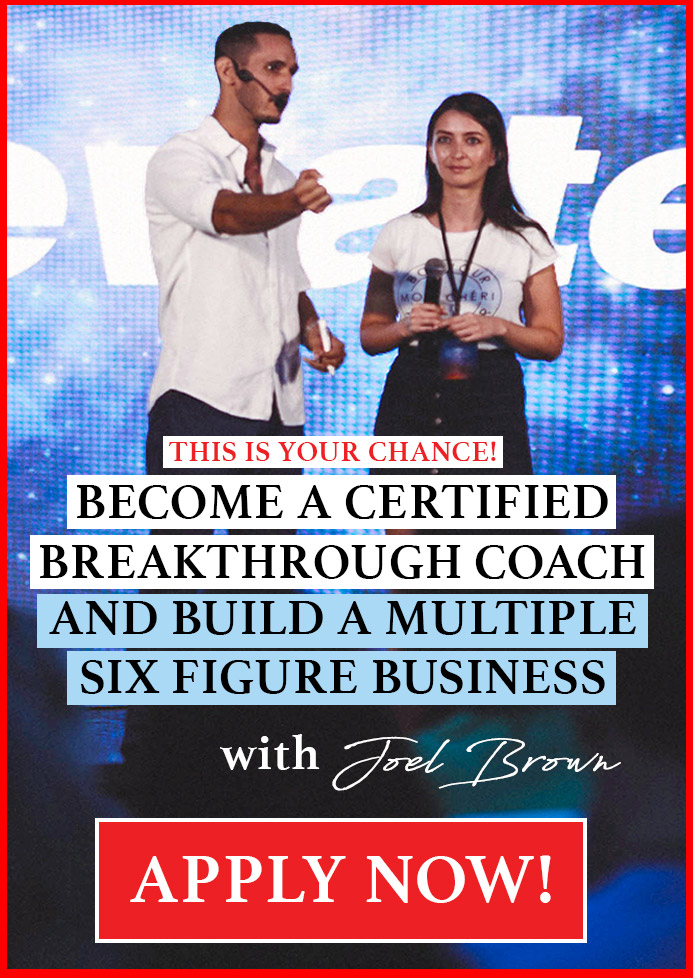Startups
9 Startup Lessons You Can Learn From Canva – Melanie Perkins

It seems that everywhere I go people can’t stop saying how they think Canva will be the next billion-dollar company and how everyone loves their online design platform. Canva Co-Founders Melanie Perkins and Cliff Obercht have been able to convince the likes of Bill Tai, Lars Rasmussen and Guy Kawasaki to join their vision for a revolution in online design technology.
Canva only launched on the 26th of August 2013 and they now boast some amazing stats like:
– Over 5 million users who have created more than 30 million designs,
– Nothing but word of mouth marketing (until recently)
– 600k of unique visitors to the site monthly
– Over 14,000 blogs have written about Canva
– More than 2000 videos have been made about the product
If that was not impressive enough, Canva has raised $12.6M USD to date and has gone from 2 million users to 5 million users in just 4 months. The reason Canva has been so successful comes down to a number of points, which Melanie shared with me in a recent interview.
The whole philosophy of Canva is best described by their Chief Evangelist Guy Kawasaki (former Apple Evangelist), who says that they are democratising design the same way Google democratised search.
The fundamental point that I drill into with Melanie is how an earth they were able to convince influential people to support them even when they hadn’t even built a product and Canva was nothing more than a cool idea.
Below are the nine startup lessons that Melanie taught me about Canva’s journey when I interviewed her.
1. You must have determination and guts
The strongest attribute Melanie has is determination. It takes a long time to create a company and there is a lot of rejection, failure and times where it would be a reasonable thing to give up. A great example of determination is the fact that it took Melanie three years from meeting their first investor to actually landing the first investment.
Let’s face it, most startup founders would give up after 12 months, but if you keep an eye on what you are trying to achieve and really keep focused on the vision (the vision is what people will rally behind in time), you will eventually break through and come to the right solution.
2. Influence one lighthouse person (the butterfly effect)
One of the sole reasons Canva has been a big success is that Melanie focused in the early days on finding one highly influential person in their space and getting them to help with their startup – stop trying to meet hundreds of people and just concentrate on a few big names.
The first person that Melanie was able to connect with was the very well-known venture capitalist Bill Tai. She met him in 2011 when he was in Perth for an event called inventor of the year and he told her to look him up when she came to San Francisco.
Like any clever entrepreneur, Melanie took action and six months later she arrived in San Fran where she planned to stay for two weeks. After meeting Bill there, Melanie ended up staying for three months. Bill told Melanie that for him to invest in Canva she must find a technical team to build the product because at this stage it was no more than an idea.
After raising the problem, he then introduced Melanie to Lars Rasmussen, who agreed to help find the technical team. One year later they had a technical co-founder that Lars referred to them. The beauty of this whole process was that Melanie was able to get some amazing people to buy into her vision even before she had any product at all.
When I asked Melanie how she was able to influence so many high profile people, she said to me that she has a diagram, which she calls the butterfly effect. The diagram shows once she was able to influence one powerhouse person like Bill, her network followed a butterfly effect and she met everyone else through some sort of link to Bill.
Every single step along the way you could say “if that didn’t happen nothing would have happened” – that’s the butterfly effect. You don’t know what could have happened or would have happened. How do you find people like Bill? The same way everyone else does; through conferences, LinkedIn, email, telephone, along with persistence.
3. You don’t have to be a coder
Many startup founders have a limiting belief that you must be a coder of some sort to be a founder of a tech company. First of all, every new startup can be considered a tech startup because almost every product will be connected to the internet in some way.
Secondly, Canva Founders Melanie and Cliff had no coding experience what so ever. With their first startup Fusion Books, they outsourced all the technical part of their business to another company.
This was a great lesson for them because it allowed them to focus on learning how the technology works, educating themselves on product management, and it even helped them to develop project management skills.
They learnt on their second startup Canva that because the product was heavily reliant on technology they would require a technical co-founder. The genius of their startup was that they had a highly skilled person, Lars Rasmussen that was doing the hiring of software engineers.
This resulted in only the best engineers being hired and allowing both founders to focus on their strengths because the technical side was taken care of. When they eventually brought in a technical co-founder, they had someone who had equity in the company and who was then motivated to see the business succeed.
Also, keep in mind that highly skilled engineers are attracted to things that are very challenging and have never been done before so if you’re startup’s vision aligns with this, the odds are stacked in your favour.
4. Having a startup track record helps
If you’re attempting to convince investors to invest in you before you have a product, Melanie recommends that it’s preferable that you have some sort of track record in business beforehand. When Melanie and Cliff were searching for investment for Canva before they had a product, they were able to show a track record through their first startup Fusion Books that had already had success.
The beauty of Fusion Books was that Melanie and Cliff were able to start with a small niche, prove their skills, and then go wider with Canva. This is great advice for any startup that is in the early stages of executing on an idea.
Bill Tai wanted to invest in Canva even though there wasn’t a product yet because he was very surprised that Melanie and Cliff were able to build a profitable company beforehand (this is extremely rare). He also loved the vision, which is why he chose to help.
5. Don’t be obsessed with the drug called Venture Capital
A lot of startups suffer from the drug that can be venture capital funding. They become obsessed with raising capital and it becomes what they use to benchmark whether they are successful or not. Melanie explained that venture capital funding can be like a time bomb, once you raise, your startup must grow like crazy otherwise if it doesn’t, you will very quickly have no company at all.
The benchmark you should be using to measure your startup’s success is when customers give you their money, which is also a much better way to raise capital. This demonstrates that people other than yourself believe in your startups solution and that it’s solving a real world problem.
If you decide that you must raise venture capital then you should only do so when you know roughly how many people you need, you have a clear execution plan, you know what steps you need to take, and you have a product market fit.
6. The problem you solve must be ambitious
A factor that helped Canva stand out from other startups was that their solution was ambitious. The reality is that highly successful people are attracted to ambitious, challenging and world transforming ideas.
If you want to attract amazing people like Guy Kawasaki to your startup, then your startup must meet this criteria and that’s exactly what Canva did, which is why they attracted great talent. This great talent then attracted more great talent and the success cycle compounded again and again.
Ambitious problems take time to solve and take a long time to build momentum, but when you do solve these types of problems, there will be no shortage of successful people desperate to help you with your vision.
“Solve customer’s problems and make sure that the customer is representative of a large market and then you will have a pretty good formula”
7. The pitch deck needs to be all about the problem
Part of the journey whenever you are trying to sell your startup idea to people is to be able to use a quality pitch deck. Given the number of times Melanie had to pitch to investors, I asked her what advice she would give other startups when putting together a pitch deck.
Melanie explained to me that before Canva’s first investment, they had revised their pitch deck over one hundred times. The feedback that Melanie got consistently was that investors didn’t know much about the design landscape so this had to be addressed in the deck.
It’s a good idea to address anything that is tricky or confusing about your product right up front. When you are putting together your pitch deck, you need to start from a macro perspective and begin with the problem you are solving first. You need to be spending 80% of the deck on the problem and only 20% on the solution.
Your pitch deck needs to explain to investors the huge opportunity that exists, the large market for your solution and the macro landscape that exists. Instead of telling your solution right up front, focus on demonstrating its importance first. The other key point is to make sure your solution is a problem that people care about and want to be solved.
“Anyone can have a solution but if no one cares about it, unfortunately, you are not going to have a very big company”
8. Understand the risk appetite of the person your pitching
One of the most powerful lessons Melanie taught me is around knowing when to pitch to certain investors based on your startup’s life cycle. Different investors have different risk appetites so as your startup hits each milestone, different investors barriers to risk are removed.
If we look at Canva’s life cycle, they started with a strong vision, then they had a skilled team, then they had a great product, then they had a highly engaged community, then they had very strong performance graphs and now they have a strong monetisation model (thanks to Canva for work).
As Canva hit each milestone, Melanie said that different types of investors wanted to be a part of their vision. In the early stages, the only box that Canva ticked was a great vision and so this didn’t meet many investors risk appetite, although it did interest a few.
The Canva pitch to investors was rejected many times but what Melanie realised was that when investors said no, what the investor was really saying was that the current phase of their startup didn’t meet his or hers individual risk appetite.
“The rejection is often not because of the reasons you think they are rejecting you”
9. Regular contact after the pitch is crucial
I think that anyone can get in contact with an influential person at least once, but to keep in touch with someone who is high profile, takes real skill. When I presented this challenge to Melanie, she described how she was able to overcome this.
She explained to me that after the initial contact with an influential person, she would tell them what the next milestone was that Canva was going to achieve, and then when they achieved it, she would let them know.
In-between key milestones she would send influential people a copy of any Canva press to help keep her startup front of mind. The key Melanie says is that when you tell someone you are going to do something then just do it.
If you continue to do what you say you’re going to do, and you’re persistent, it will build up your credibility over time with the influential person. The other key trick is to send updates of your startup every few months – don’t overdo it with weekly updates.
***Melanie’s Recommendations***
Favourite Book – Designing the obvious (product design book) – Robert Jr Hoekman
Best Venture Capital Advice – The Venture Hacks Bible (Melanie used this PDF to learn what was involved in raising capital)
Favourite Quote – “Happiness is when what you think, what you say, and what you do are in harmony” – Gandhi
Favourite Startup Tool – UserTesting.com (understand how users are using your site)
If you have any of your own startup tips then please comment below and make sure you visit Melanie’s latest creation Canva For Work here.
Shift Your Mindset
10 Powerful Traits Every True Thought Leader Possesses
In a world saturated with noise, thought leadership is the quiet power that shifts paradigms.

Thought leadership is more than just having strong opinions. It’s the ability to influence, inspire, and guide others by sharing original insights, innovative ideas, and deep domain expertise. It’s about sparking change, not just talking about it. (more…)
Startups
The Young Man’s Guide to Creativity: 10 Daily Habits to Improve Your Creative Mind
10 daily habits you can put into practice right now to improve your creativity

When I was 22 years old, I became a Top Writer on Medium.
It’s not an easy path. I lived in the Philippines and had never received a penny after writing over 100 digital articles. But I treated it like practice. If I couldn’t get other people to read my work for free, why would they trust me? (more…)
Startups
If You’re Not Reinventing Yourself, You’re Falling Behind! Here’s What To Do
Reinvention is the secret weapon of high performers.

Reinvention is the secret weapon of high performers.
Most careers follow a predictable script. You start at the bottom, climb the ranks, and eventually settle into something resembling stability. But the people who make the biggest impact, the ones who don’t just play the game but change it, break that script. They evolve. They shift. They reinvent. (more…)
Startups
The Silent Killer of Startups: This Might Be Draining Your Profits
If you are careless in managing your inventory, it can lead to a sudden depletion in cash flow

There are several issues in a startup, but if you are really careless in managing your inventory, it can lead to a sudden depletion in cash flow. Old, broken, and misplaced stock wastes space and profits. If inventories and storage aren’t managed properly, it hardly ever works.
-

 Success Advice3 weeks ago
Success Advice3 weeks agoThe One Mindset Shift That Made Me Irreplaceable At Work
-

 Scale Your Business4 weeks ago
Scale Your Business4 weeks agoWhy Smart Entrepreneurs Never Skip This One Business Expense
-

 Success Advice3 weeks ago
Success Advice3 weeks agoHow Playing by the Rules Became the Smartest Business Strategy
-

 Did You Know2 weeks ago
Did You Know2 weeks ago7 Surprising Life Lessons Video Games Taught Me That School Never Did
-

 Success Advice2 weeks ago
Success Advice2 weeks agoHow to Build Trust, Kill Micromanagement, and Lead a Team That Thrives
-

 Scale Your Business2 weeks ago
Scale Your Business2 weeks agoHow to Build a Workplace People Actually Want to Show Up To
-

 Success Advice2 weeks ago
Success Advice2 weeks agoSuccess Isn’t Sexy: 5 Daily Habits That Actually Work
-

 Scale Your Business2 weeks ago
Scale Your Business2 weeks agoHow Smart Entrepreneurs Cut Financial Chaos in Half with One Simple Switch
























6 Comments